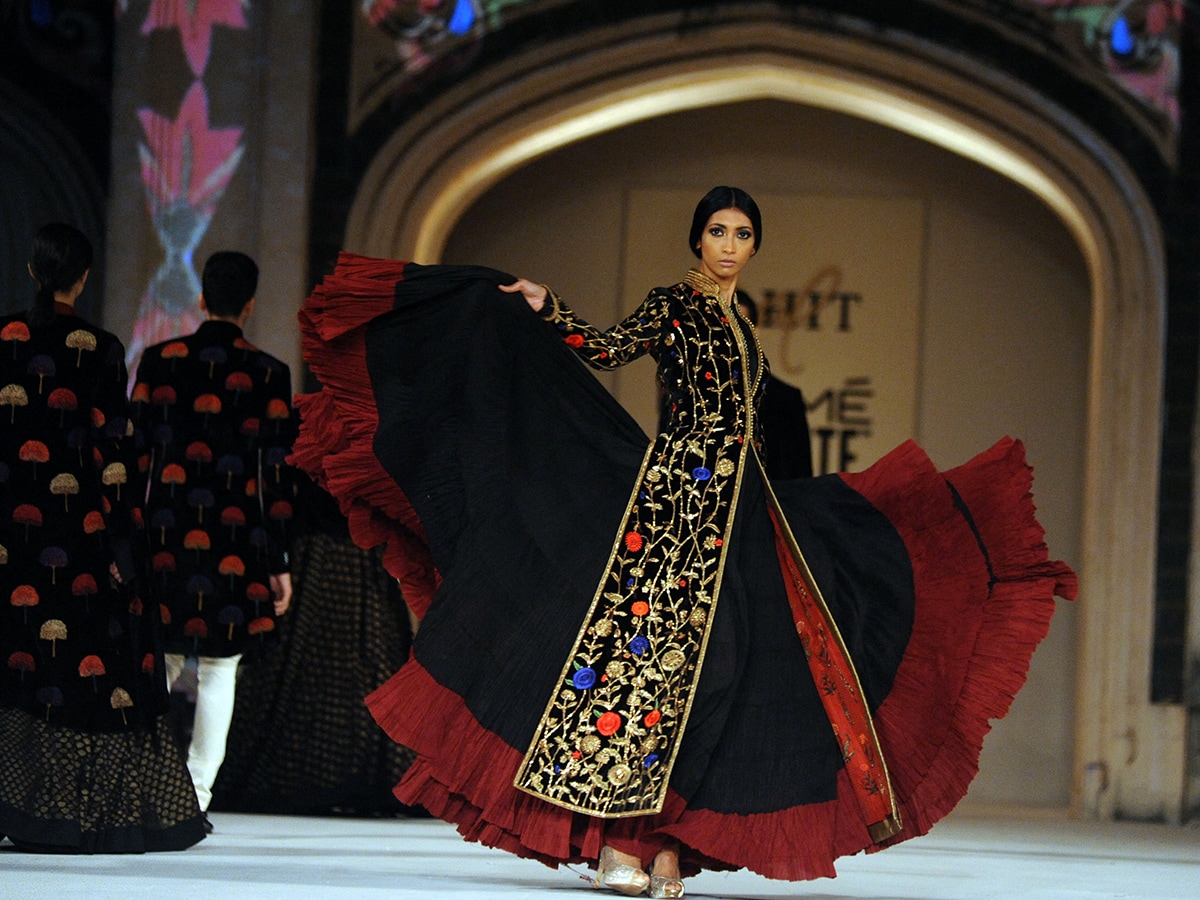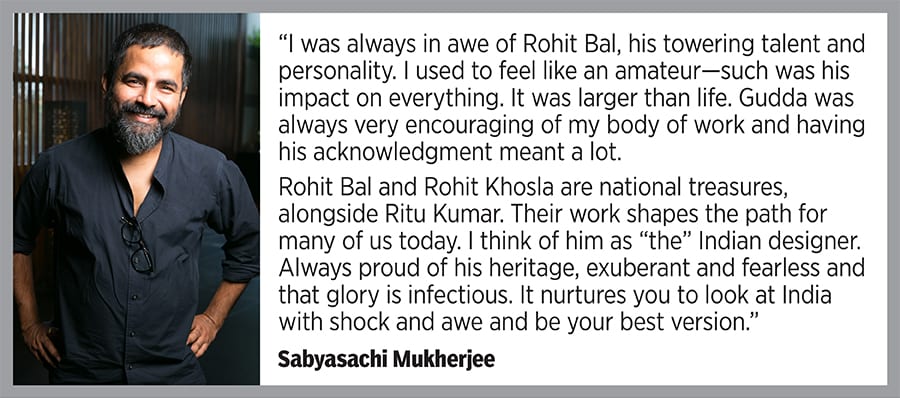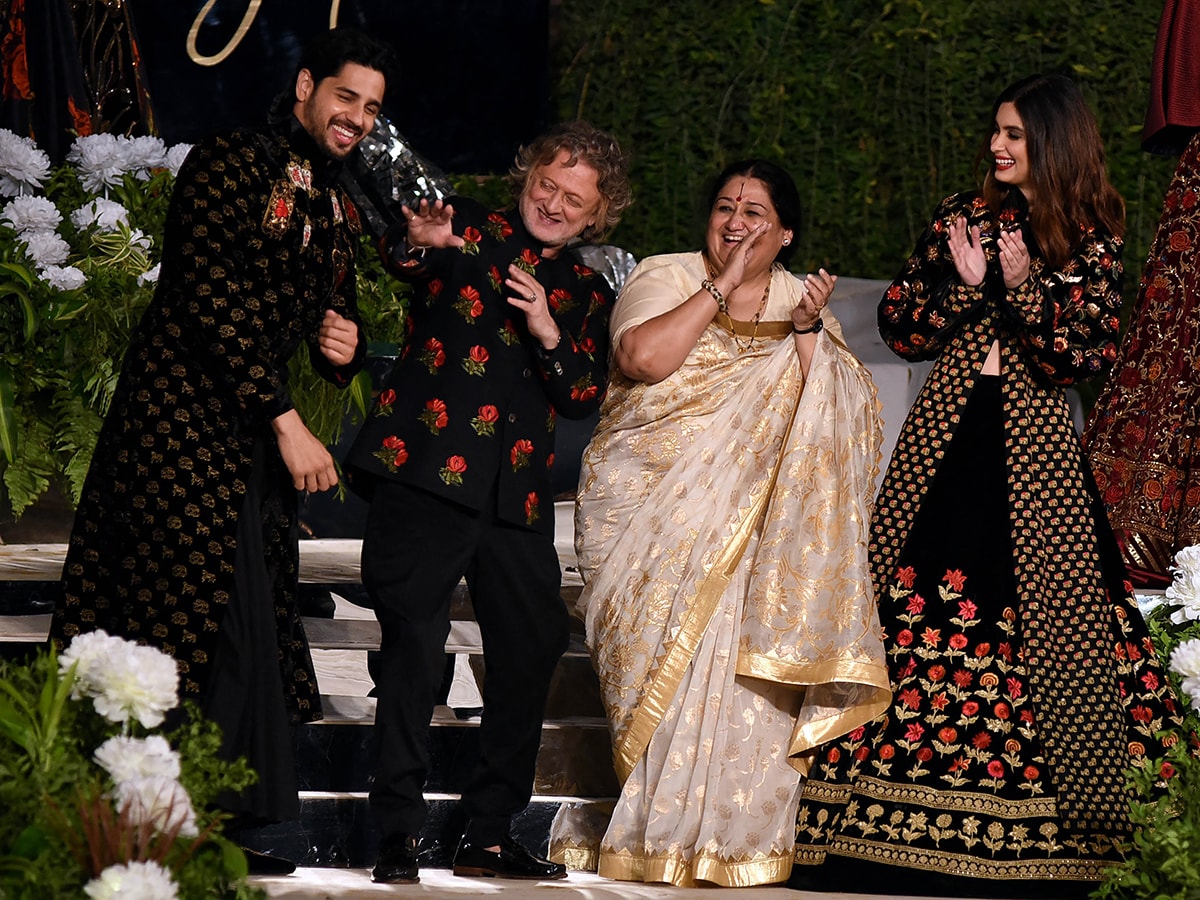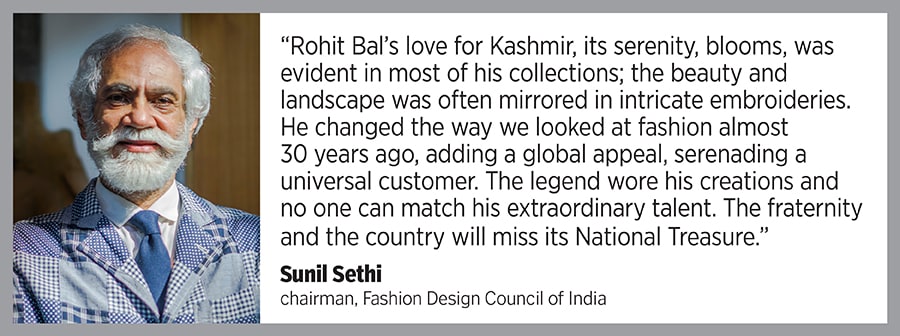Rohit Bal was 'wildly Indian, a showman, the first to take menswear seriously'
Tina Tahiliani Parikh remembers the late designer as a wild and generous man, a pioneer in being India-proud, in defining a new era of regal Indian sophistication. Couturier Sabyasachi Mukherjee says his towering talent made him feel amateur, and encouraged designers to look at India with shock and awe
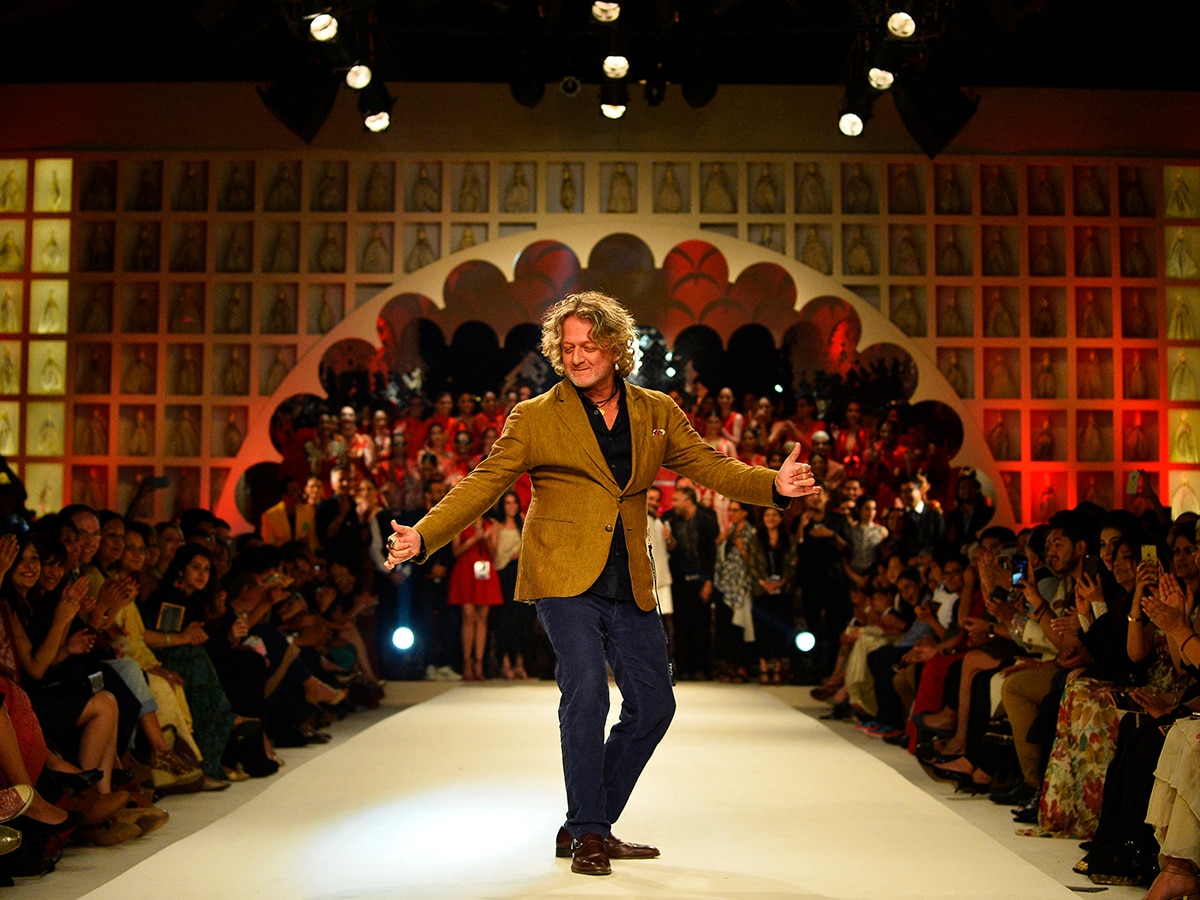 (File) Rohit Bal dances as other designers watch during the final presentation of Autumn-Winter 2015 collections at the India Fashion Week in New Delhi late March 29, 2015. Image: Chandan Khanna / AFP
(File) Rohit Bal dances as other designers watch during the final presentation of Autumn-Winter 2015 collections at the India Fashion Week in New Delhi late March 29, 2015. Image: Chandan Khanna / AFP
Rohit Bal had already been launched at Ensemble when I joined the company [in the early 1990s], and my earliest memory of him, honestly, is of these stunning Bolero jackets. At Ensemble, we had racks and we had T-stands, and we would have six of these Bolero jackets on the T-stands, they were such a beautiful, niche product—don’t forget that Indian fashion was also evolving at the time.
It was all so new, so experimental. At the time, designers were still very much on the Western format. If you look at what Rohit Khosla was doing then, he had these zebra-printed skirts and capes, with ostrich feathers; even Tarun [Tahiliani] was yet to fully move into the Indian zone. But 'Gudda' [Rohit Bal] was the first to really just embrace Indian silhouettes.
He adored the anarkali, loved the jacket shape. He used volumes of fabric in each kurta—really, volumes. He used Indian fabrics, and his sensibility was completely Indian. He used tons of mulmul. Lotuses were his favourite motif. He loved birds. I’ve never seen a silver Swarovski on a Rohit Bal, ever. He was just wildly Indian.
Gudda was a showman, and he loved what he did. With most designers, when their shows are on, they are at the back, draping each model as they walk out. But with Gudda, there wasn’t that much draping. It was a voluminous kurta with a jacket, or a voluminous anarkali with a Bolero and some headgear. There were birds, flora, fauna; there were rich velvets, beautiful garnets, deep, Prussian blues. It was just heady. He was Kashmiri and so proud, and so much of what he made, from the silhouettes to the motifs, would be a love letter to his roots.
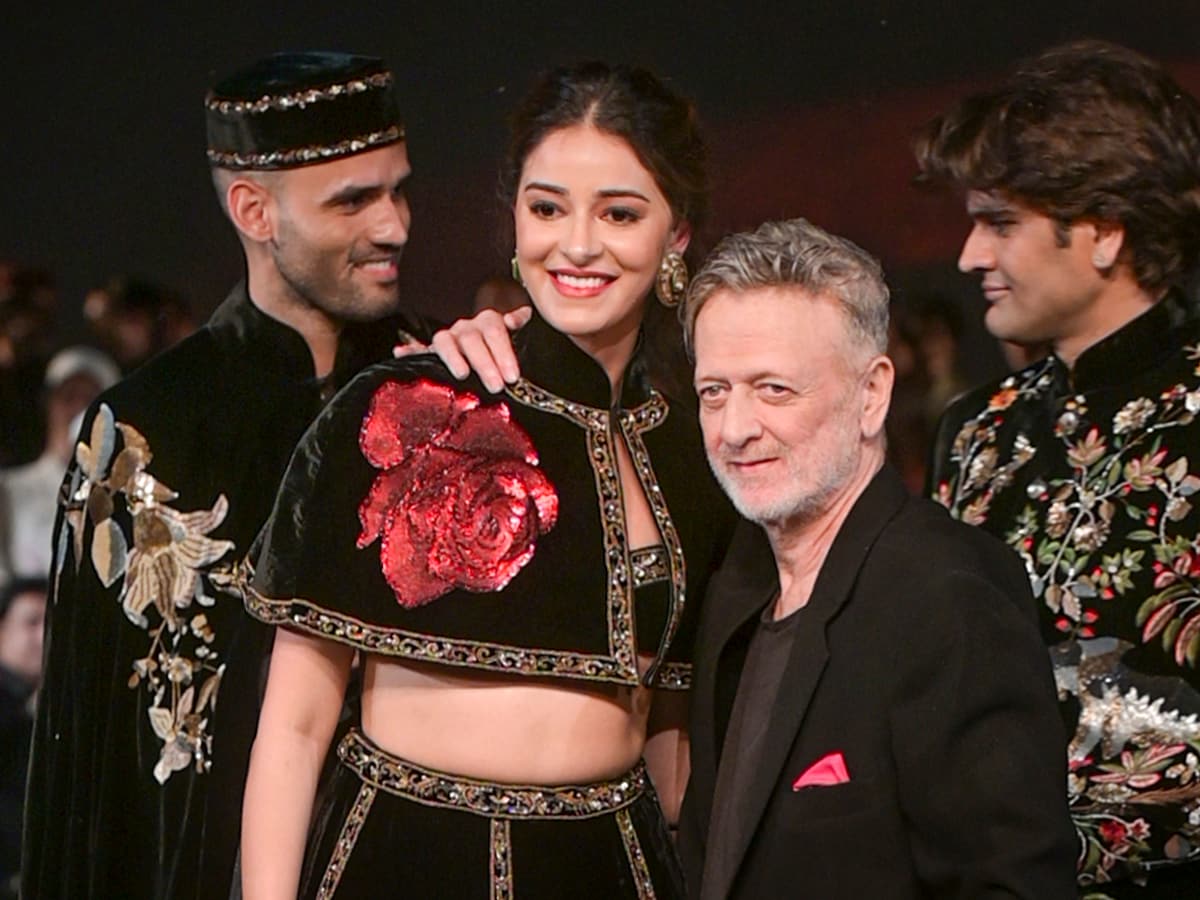 Actor Ananya Panday with designer Rohit Bal on the ramp during the grand finale of Lakme Fashion Week, in New Delhi, Sunday, Oct. 13, 2024. Image: PTI Photo
Actor Ananya Panday with designer Rohit Bal on the ramp during the grand finale of Lakme Fashion Week, in New Delhi, Sunday, Oct. 13, 2024. Image: PTI Photo



